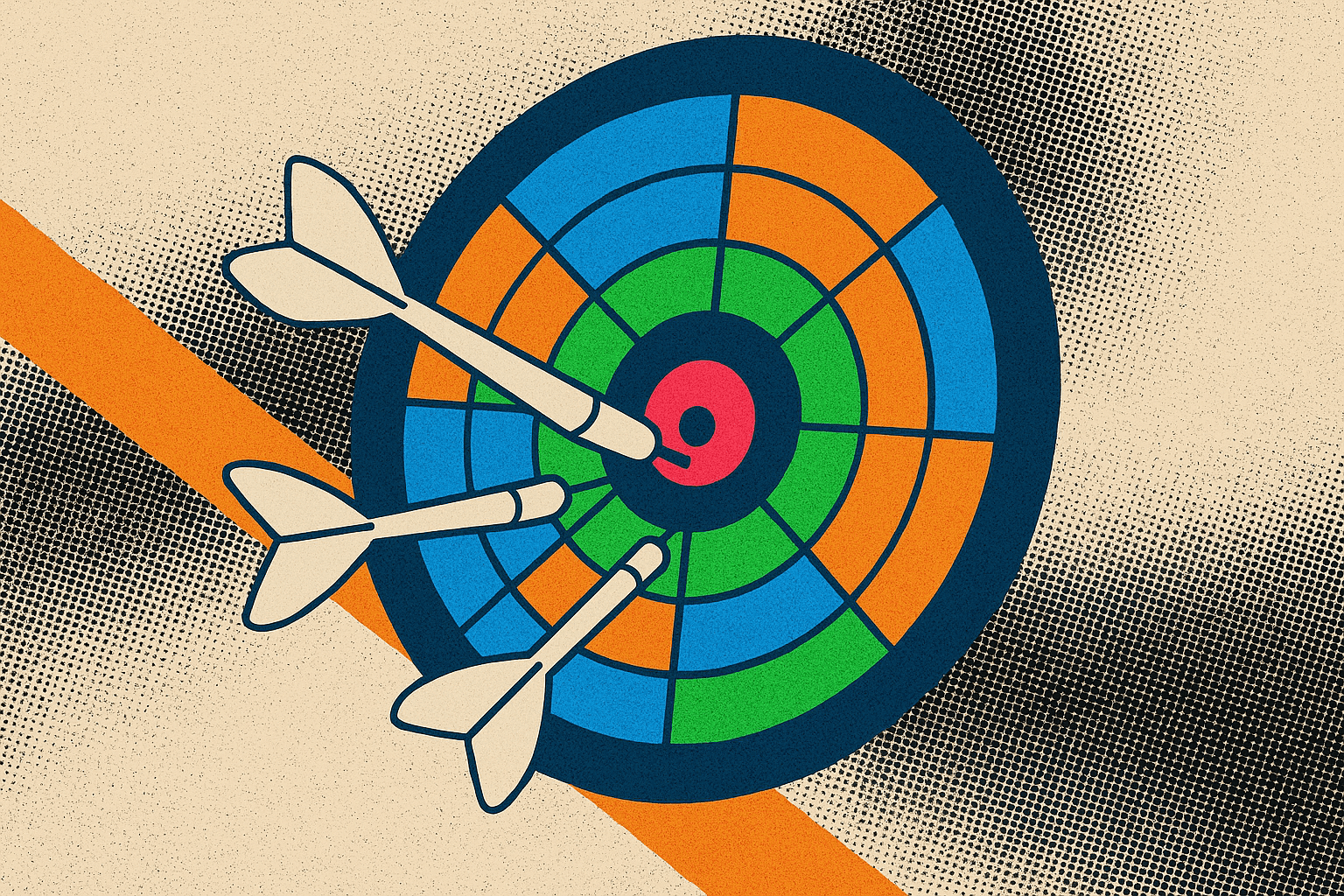Product directors in enterprise SaaS often struggle to set meaningful OKRs (Objectives and Key Results) or KPIs for design teams. All too often, design teams end up with “vanity” metrics or project-centric goals that look good but don’t impact the business. Let’s face it: a beautifully crafted UX is only as valuable as the outcomes it drives. In this post, we’ll explore why design OKRs sometimes miss the mark, what good alignment looks like, and how to craft design metrics that tie directly to overarching business KPIs. We’ll keep it informal yet informative – perfect for a seasoned (but busy) audience.
Why Design OKRs Often Fail to Move the Business Needle
Many design OKRs focus on outputs rather than outcomes. A team might commit to “redesign the dashboard UI” or “create a new component library.” These are tangible outputs, but they don’t inherently create business value. Nielsen Norman Group has written extensively on how design teams often fail to connect their efforts to high-level KPIs like revenue or retention.
As Intercom points out, this leads to what they call the “Dribbblisation of design”—overemphasising polished UI at the expense of solving real problems. A redesign might win awards but do little to improve user retention or product adoption. Vanity metrics like “number of mockups created” or “design system components added” can give a false sense of progress without delivering real-world results.
What Good Alignment Looks Like
Effective design OKRs are outcome-focused and directly support business metrics. For example, instead of “Improve the settings UX,” a stronger objective would be “Increase successful self-service password resets.” A measurable key result might be “Reduce support tickets related to password resets by 30%.”
Google’s OKR framework emphasises the importance of measurable, ambitious outcomes. Objectives should answer “Where do we want to go?” and key results answer “How will we know we’re there?” Design teams that embrace this mindset align naturally with product, engineering, and business stakeholders.
Useful vs. Vanity KPIs
Useful KPIs | Vanity Metrics |
|---|---|
Task Success Rate | Number of Screens Designed |
Conversion Rate on Signup Flow | Time Spent on Page (without context) |
Feature Adoption (% of users using new feature) | Design System Components Created |
Customer Satisfaction Score (CSAT) after interaction | Total Figma Hours Logged |
According to NNG, vanity metrics are often not actionable and don’t tie to user behaviour. Good KPIs should change when the product gets better and should reflect a meaningful shift in customer experience or business performance.
Frameworks to Connect Design Metrics to Business KPIs
Google’s OKR System: Define outcome-driven key results like “Increase feature adoption by 25%” or “Raise onboarding task completion from 60% to 80%.”
HEART Framework: Google’s UX metric model covering Happiness, Engagement, Adoption, Retention, and Task Success.
Spotify’s Squad Health Check: Track team health dimensions like “delivering value” and “fun.” Helps ensure a healthy design culture supports the delivery of business goals.
Customer Lifecycle Mapping (AARRR): Connect design work to funnel metrics like:
Activation: Improve onboarding UX to increase new user activation rate.
Retention: Reduce friction in key flows to increase weekly active users.
Revenue: Simplify checkout UI to improve conversion rate.
Referral: Make invite flows more visible or delightful.
UX Goals, OKRs, and KPIs: Use All Three Levels
As explained in this NNG video, design strategy works best when you use a layered system:
UX Goals: “Create a seamless cross-platform experience.”
OKRs: “Improve mobile NPS from 35 to 50.”
KPIs: “Time to task completion on mobile dashboard.”
Use goals for vision, OKRs for quarterly direction, and KPIs for tracking steady-state performance.
Collaborating Cross-Functionally
Co-create OKRs with product, engineering, and marketing. Align around shared business goals.
Translate design goals into executive language. Instead of “improve usability,” say “reduce churn by helping users find value faster.”
Share accountability. If design KPIs tie to business KPIs (like conversion or retention), treat them as squad OKRs, not design-only ones.
Use visual maps. Create a chart showing how each design initiative maps to a company KPI—this helps secure stakeholder buy-in.
Final Thoughts
When design OKRs are rooted in outcomes, not outputs, everyone wins. Design becomes a growth lever, not a cost centre. By aligning with business KPIs-conversion, retention, NPS, feature adoption-you empower designers to create meaningful impact and speak the language of the business.
So next quarter, skip the checklist of mockups. Start with the outcome, and let the design work flow from there. The results will be more strategic, more measurable, and frankly more exciting.



